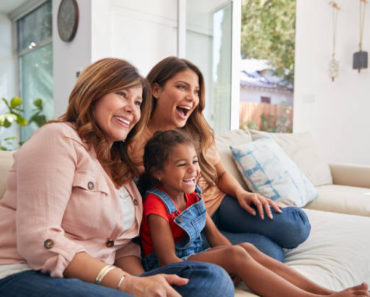Contents
- 1 How Attachment Styles Impact Stepparent Relationships
- 2 The Impact of Attachment Styles on Stepparent Relationships
- 2.1 How do different attachment styles impact the development of trust and intimacy in stepparent-child relationships?
- 2.2 What are the challenges faced by stepparents with different attachment styles in forming secure attachments with their stepchildren?
- 2.3 How can stepparents with anxious or avoidant attachment styles work towards creating healthy and secure attachment bonds with their stepchildren?
- 2.4 Related Posts

Welcome to Stepparent Magazine! In this article, we delve into the fascinating topic of how attachment styles impact relationships. Whether you’re a stepparent navigating through blended family dynamics or simply interested in understanding human connections, stay tuned for valuable insights into the intricate workings of attachment and its profound effects on our lives.
How Attachment Styles Impact Stepparent Relationships
Attachment styles play a crucial role in shaping stepparent relationships. Attachment refers to the emotional bond between individuals, which begins during early childhood and influences how people interact with others throughout their lives. There are four main attachment styles: secure, anxious-preoccupied, dismissive-avoidant, and fearful-avoidant.
In stepparent relationships, attachment styles can greatly impact the dynamics and quality of the relationship. Stepping into a new family structure can be challenging for both the stepparent and the stepchild, and their attachment styles can either support or hinder the formation of a healthy bond.
A secure attachment style is characterized by a sense of trust, comfort with intimacy, and positive expectations in relationships. Stepparents with secure attachment styles tend to establish strong connections with their stepchildren, providing them with support, guidance, and love. This promotes a sense of belonging and stability, enabling the formation of a healthy stepparent-stepchild relationship.
On the other hand, anxious-preoccupied attachment style may lead to difficulties in stepparent relationships. Individuals with this attachment style often crave closeness and reassurance but also fear rejection or abandonment. In a stepparent context, anxious-preoccupied stepparents may struggle with feeling insecure or not being fully accepted by their stepchildren, leading to relationship challenges.
The dismissive-avoidant attachment style is characterized by an emphasis on independence and a tendency to avoid emotional intimacy. Stepparents with this attachment style may struggle to form close bonds with their stepchildren, as they might prioritize their own personal space and autonomy over developing a deep connection.
Lastly, the fearful-avoidant attachment style combines elements of both anxious-preoccupied and dismissive-avoidant attachment styles. Stepparents with this attachment style may experience conflicting emotions, alternating between a desire for closeness and a fear of rejection or disappointment. This can create instability and uncertainty in the stepparent-stepchild relationship.
Understanding the impact of attachment styles on stepparent relationships can help individuals navigate challenges and foster healthier bonds. By recognizing their own attachment style and that of their stepchild, stepparents can work towards building trust, open communication, and empathy, ultimately creating a positive and supportive environment within their blended family.
The Impact of Attachment Styles on Stepparent Relationships
1. Understanding Attachment Styles in Stepparent Relationships
In this section, we delve into the concept of attachment styles and their significance in stepparent relationships. We explain how *attachment styles* are formed during childhood and how they shape our feelings, behaviors, and expectations in adult relationships. Furthermore, we explore how different attachment styles may influence the dynamics and interactions between stepparents and stepchildren.
2. The Role of Secure Attachment in Stepparent Relationships
Here, we focus on the importance of *secure attachment* in stepparent relationships. We discuss how individuals with secure attachment styles tend to have greater emotional stability, trust, and effective communication skills, which can positively impact their ability to establish a healthy bond with their stepchildren. Additionally, we examine strategies and techniques that can be utilized to cultivate a secure attachment with stepchildren.
3. Challenges and Strategies for Different Attachment Styles in Stepparent Relationships
In this final section, we address the challenges faced by stepparents and stepchildren who possess *insecure attachment styles*, such as anxious or avoidant attachment. We highlight the specific difficulties that may arise in these relationships, such as trust issues, fear of rejection, or difficulties in forming emotional connections. Moreover, we provide practical strategies and interventions that can help stepparents and stepchildren navigate these challenges and foster healthier attachment dynamics.
How do different attachment styles impact the development of trust and intimacy in stepparent-child relationships?
Different attachment styles can have a significant impact on the development of trust and intimacy in stepparent-child relationships. Attachment styles, which are formed in early childhood, shape how individuals approach and navigate relationships throughout their lives.
In a stepparent-child relationship, the attachment style of both the stepparent and the child can influence how they bond and form trust with each other. For example, if the child has a secure attachment style, characterized by a sense of trust and security in relationships, they may be more open to forming a close bond with the stepparent. This can lead to a quicker development of trust and intimacy in the relationship.
On the other hand, if either the stepparent or the child has an insecure attachment style, such as anxious or avoidant attachment, it can hinder the development of trust and intimacy. Anxious attachment involves a fear of abandonment or rejection, leading the individual to seek constant reassurance and validation. Avoidant attachment, on the other hand, involves a tendency to avoid emotional closeness and intimacy.
In stepparent-child relationships, these attachment styles can manifest in different ways. For instance, a child with an anxious attachment style may be excessively clingy or constantly seek attention and validation from the stepparent. This can put pressure on the stepparent and make it difficult for them to establish boundaries and build trust.
Conversely, a stepparent with an avoidant attachment style may struggle to connect emotionally with the child, leading to distance and difficulty in forming a close bond. The child may perceive this emotional distance as rejection, making it challenging for them to develop trust and intimacy with the stepparent.
It is crucial for stepparents to recognize and understand their own attachment style as well as the child’s attachment style. By doing so, they can be more mindful of their own behaviors and reactions, and take steps to create a secure and nurturing environment that promotes trust and intimacy.
Additionally, stepparents can work on strengthening the attachment bond by engaging in activities that promote bonding, such as spending quality time together, engaging in open communication, and showing consistent support and care. Creating a safe and predictable environment can help foster trust and intimacy in the stepparent-child relationship, regardless of the attachment styles involved.
What are the challenges faced by stepparents with different attachment styles in forming secure attachments with their stepchildren?
Stepparents with different attachment styles may face several challenges in forming secure attachments with their stepchildren. Attachment styles, which are patterns of relating to others that develop in early childhood, can influence how individuals form and maintain relationships later in life.
For stepparents with a secure attachment style, forming a secure attachment with their stepchildren may come more naturally. They are likely to provide consistent emotional support, establish trust, and create a safe environment for the child. Their ability to regulate their emotions and respond sensitively to the child’s needs helps build a secure attachment.
On the other hand, stepparents with an anxious attachment style may struggle to form secure attachments with their stepchildren. These individuals tend to be more preoccupied with their own feelings of insecurity and may seek excessive reassurance or validation from their partner or stepchild. This overdependence on validation can hinder their ability to build a secure attachment with the child.
Stepparents with an avoidant attachment style may also face challenges in forming secure attachments with their stepchildren. They tend to have difficulty with emotional closeness and may prioritize their own independence over building emotional connections. These stepparents may struggle to provide the level of emotional support and engagement necessary for a secure attachment to develop.
It is important for stepparents to recognize their own attachment style and how it affects their relationship with their stepchild. Seeking therapy or counseling can be beneficial in addressing any attachment-related challenges and improving the quality of the parent-child relationship. Additionally, open communication and understanding between the stepparent and biological parent can help create a supportive and nurturing environment for the child’s development of secure attachments.
How can stepparents with anxious or avoidant attachment styles work towards creating healthy and secure attachment bonds with their stepchildren?
Stepparents with anxious or avoidant attachment styles can take several steps to create healthy and secure attachment bonds with their stepchildren.
1. Understanding your own attachment style: It is important for stepparents to recognize and understand their own attachment patterns and how they might impact their relationships with their stepchildren. This self-awareness is the first step towards creating a more secure bond.
2. Building trust and rapport: Stepparents should focus on building trust and rapport with their stepchildren by being reliable, consistent, and empathetic. Engage in activities that promote bonding, such as spending quality time together, engaging in shared interests, and having open and honest communication.
3. Offering emotional support: Stepparents need to provide emotional support and be attuned to their stepchildren’s needs. Actively listen to their concerns, validate their feelings, and offer a secure and nurturing environment where they feel safe to express themselves.
4. Respecting boundaries: It is important for stepparents to respect the boundaries of their stepchildren. Understand that building a secure attachment takes time and patience. Allow the relationship to develop at a pace comfortable for both parties and avoid pushing for closeness before the child is ready.
5. Seeking professional help if needed: If the attachment difficulties persist or become significantly challenging, seeking professional help from a therapist or counselor who specializes in stepparenting or family dynamics can be beneficial. They can provide guidance and strategies specific to the unique challenges faced by stepparents.
Remember that creating a healthy and secure attachment bond takes time, patience, and understanding. Each stepchild is different, and it is important to tailor your approach to their individual needs and personalities.
In conclusion, understanding how attachment styles affect relationships in the context of stepparenting is crucial for building healthy and harmonious blended families. Being aware of our own attachment style and that of our partner can help us navigate potential challenges and conflicts effectively. Secure attachment styles are associated with more positive outcomes in stepparent-stepchild relationships, as they provide a strong foundation of trust and emotional connection. However, it’s important to remember that attachment styles can be fluid and influenced by various factors, so being open to growth and change is key. By fostering secure attachments, stepparents can create a safe and nurturing environment that promotes relationship satisfaction and fosters a sense of belonging for all family members. Through communication, empathy, and understanding, stepparents can forge strong bonds with their stepchildren and contribute to their overall well-being. Ultimately, acknowledging and addressing attachment styles can pave the way for stronger and more fulfilling relationships within blended families.







